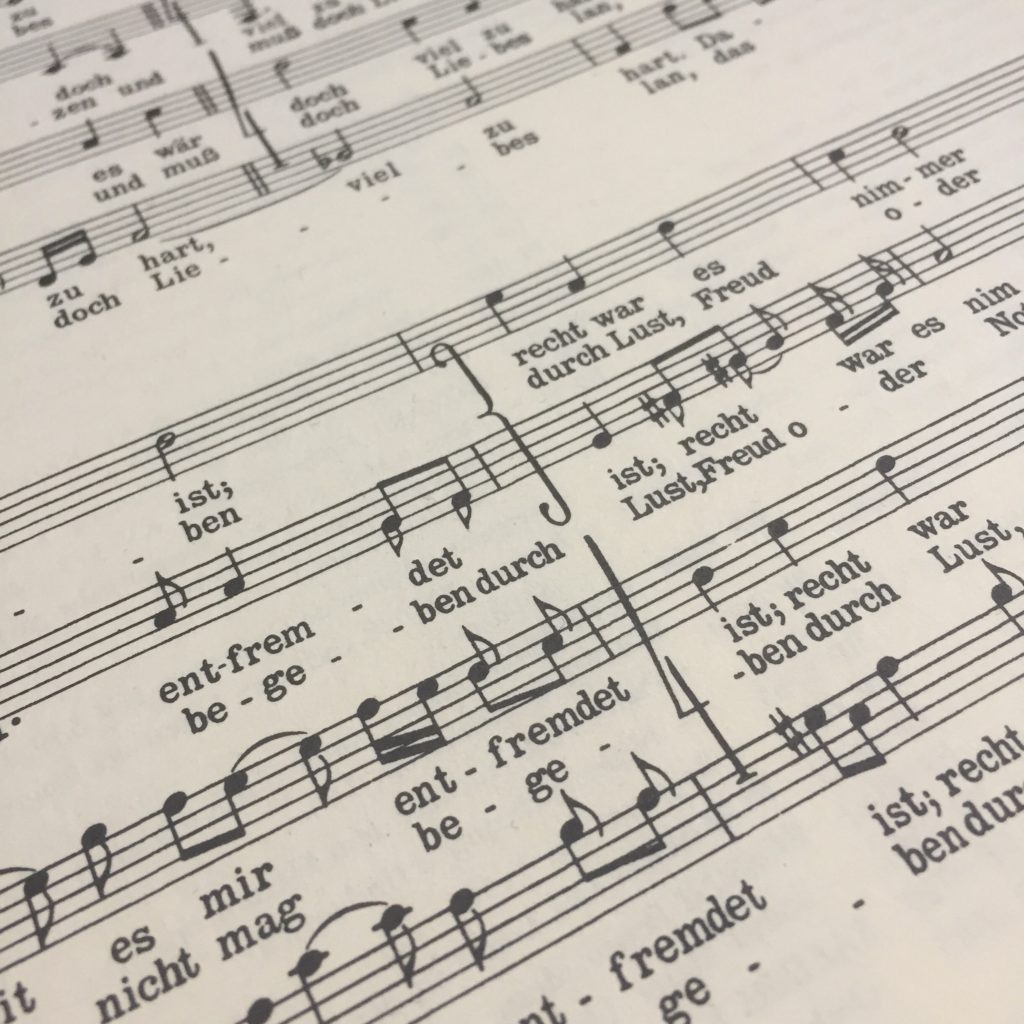I recently came across a tall, one-per-system time signature style I hadn’t really seen before in Drei Volksliedsätze by Schönberg, published by Edition Peters (c) 1930.

I searched around for some info about their purpose but didn’t find a ton of information. Some say that they are useful for conductor’s scores, others say that they’re useful when a time signature changes frequently throughout a piece. Most examples I’ve found are a lot more ungainly (but definitely more legible) than the tall, elegant time signatures in the Schönberg.
The usage isn’t consistent in the three songs. The first of the three (Schein uns, du liebe Sonne) has a standard one-per-stave time signature and is in 4/4 throughout. The second (Es gingen zwei Gespielen gut) is in 6/4 throughout and has a tall signature. The third (Herzlieblich Lieb, durch Scheiden) is a little nuts. It’s got tall time signatures and starts in 3/4, then packs 5 meter changes in to the remaining 21 measures.
The texture of the final two pieces, both rhythmically and harmonically, is much tighter than the first. Because of that, my feeling is that in this song cycle they’re maybe meant to encourage singers to read across the staves, to become more attuned to where they fit in as part of the whole. Would like to ask someone more knowledgeable in this sort of thing to see what they think.
